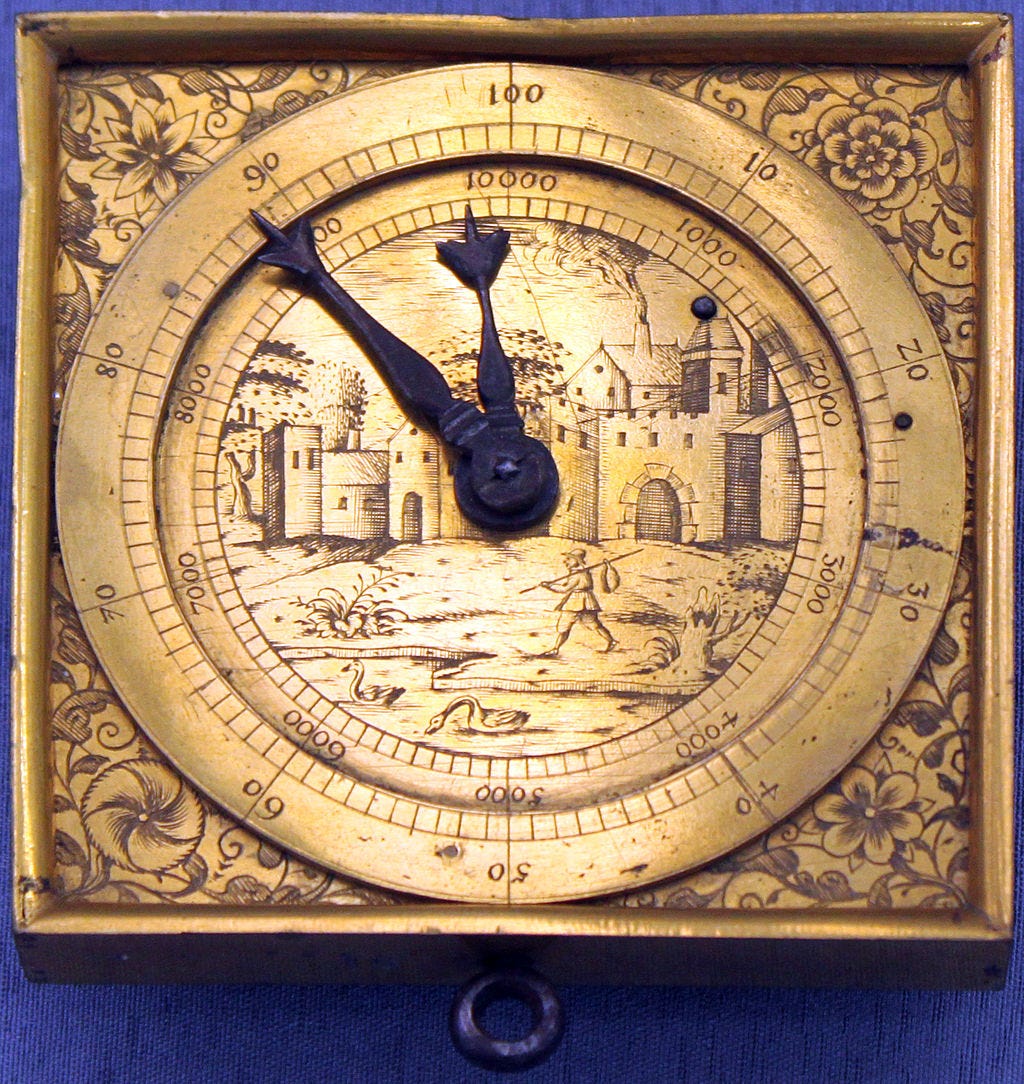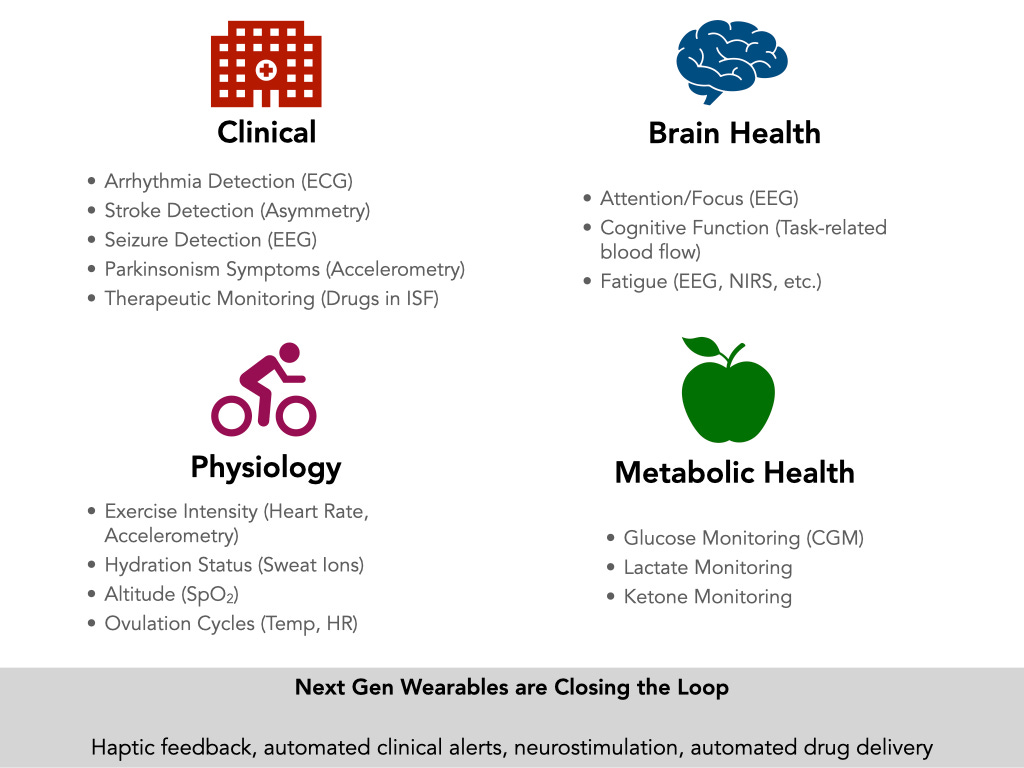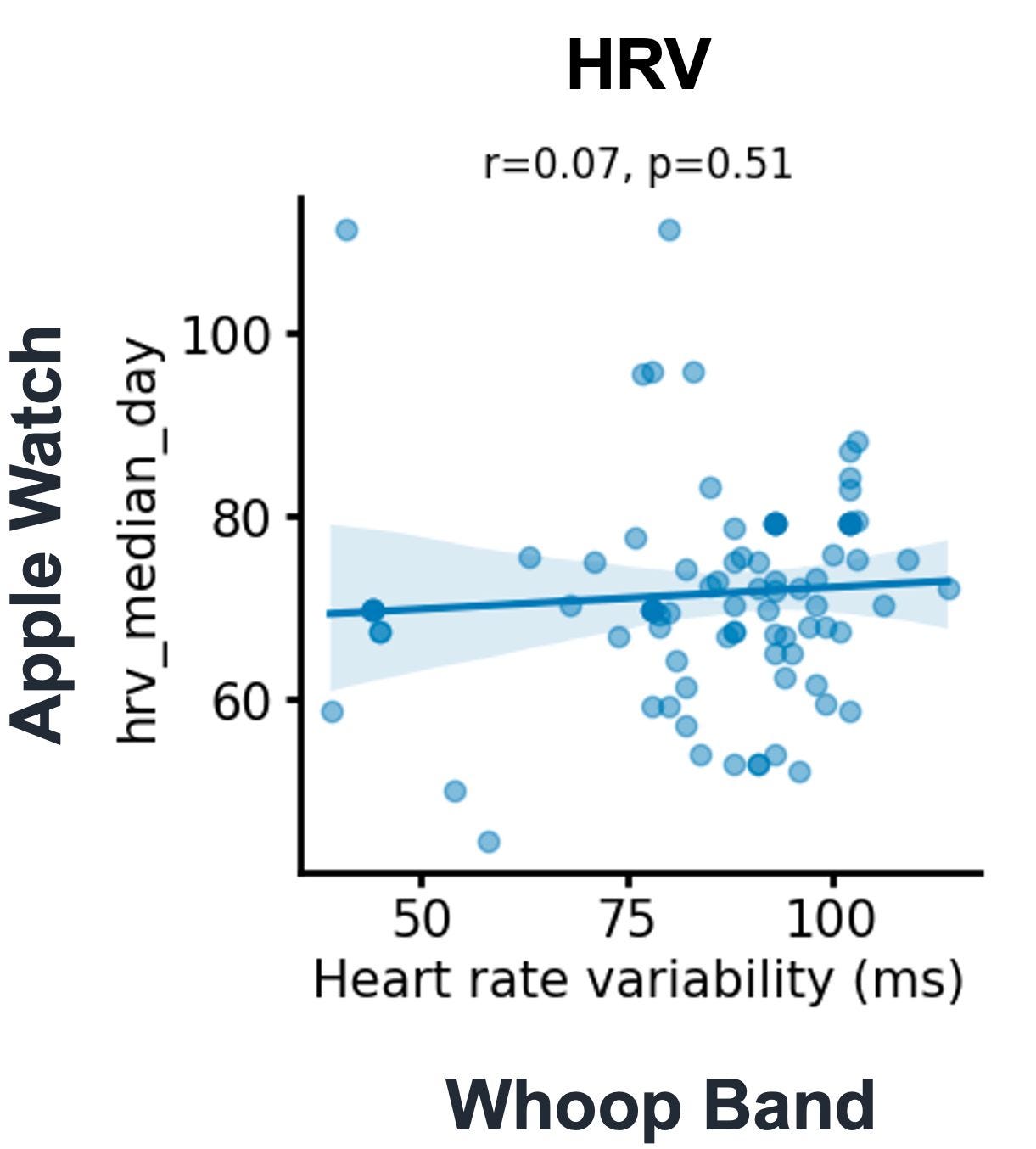Closed Loop Wearables: Tightening the Gap Between Insight and Action
While wearables offer valuable health insights, it’s still up to us to change our behavior. Next-gen devices, however, promise to bridge that gap by making it easier to act on those insights.
We are firmly in the era of wearables.
As of 2023, 44% of Americans own wearable health tracking devices. The global wearable technology market is expected to reach $152 billion by 2029 with a CAGR of 16.8%. People purchase wearables for a variety of reasons—from tracking fitness and monitoring sleep to understanding how your body’s glucose levels respond to bagels. Now, even watches are emerging as a more convenient way to take phone calls than your cell phone.
As a millennial, I remember FitBits as the original wearable to measure step count. Turns out the concept of a pedometer dates back to the 1500s (potentially originally designed by Leonardo da Vinci). As technology has progressed, the quantified health movement has evolved dramatically.

In this brief article, I want to highlight four key areas where we’re seeing high levels of innovation. The main idea is how wearables will evolve over the next several years. Previously, I pointed out a major issue with current wearables: the insight-to-action gap. In other words, while you might see your sleep quality, glucose curve, or hydration status (insight), it’s still up to you to identify and implement the necessary intervention (action).
Next generation technologies are closing this loop.
We’re beginning to see haptic feedback, automated alerts from wearable devices, direct brain stimulation, and more—all triggered by signals detected from the body. Since we humans love to categorize, I’ve grouped these wearables into several types. Although this categorization is neither exhaustive nor overly complex, its how my brain works. The groups include clinical applications, brain health, physiology, and metabolic health monitoring.
Additionally, I’ll briefly cover go-to-market strategies, especially for companies straddling the line between clinical utility and consumer appeal.
Clinical Wearables
We’re increasingly seeing clinical-grade wearables featured in studies or implemented in clinical trials. This is fantastic—we can now gather real-time, objective biomarkers from patients in real-world settings. I see two primary ways this is being done.
1. Turning existing clinical grade devices into wearable devices (that is, EEG, ECG, SpO2, Temperature, etc.).
At least one study demonstrated that the Apple Watch can achieve 100% accuracy on measure heart rate both at rest and during supraventricular tachycardia. AI can now detect potential fatal arrhythmias from ambulatory ECGs with up to 98.6% accuracy (compared to 80.3% by human technicians).
How long before we close the loop with healthcare system alerts based off heart rhythms from a watch?
While there are FDA cleared EEG devices like from Zeto, we will eventually move to clinical grade EEG with even less invasive methodologies (see Brain Health applications).
Diagnosing epilepsy typically requires observing two seizures on separate occasions—a process that can take a long time and involve numerous hospital visits, especially for children. Imagine if an at-home wearable device could automatically detect seizures, allowing for an objective diagnosis and treatment while saving patients and parents precious time and reducing uncertainty.
2. Generating novel biomarkers from wearable devices correlated with disease status
Koios Care monitors Parkinson’s status by detecting bradykinesia (a hallmark symptom of Parkinson’s) from the wrist while patients are eating, etc. These real time biomarkers are being implemented in clinical trials with pharma to assess treatment efficacy, and ultimately to inform long term dosing.
With wearable datasets growing every day, the enhanced statistical power and advanced algorithms are bound to uncover associations between novel wearable features and clinical status. This breakthrough could pave the way for closed-loop medication management and delivery, helping patients remain symptom-free.
Brain Health
Smart headphones can tell you when you’re losing focus. Neurable’s algorithms can convert low and messy signal to interpretable EEG signals. This allows the user to understand their level of attention and focus and take breaks in real time and prevent burnout. Neurode is creating a closed-loop version of attention monitoring with a headband that can determine brain activity via fNIRS, AND deliver a mild non-invasive brain stimulation via a headband.
As technology evolves, not only will we be able to get clinical grade EEGs in every day devices (like the Apple Airpods patent for EEG detection), but much more. I envision the capacity to get quantitative fMRI, MEG, and perhaps even MRS in a discreet wearable device.
This would enable us to capture real-time, quantitative metrics of the brain’s physiological, electrical, and metabolic activity, offering high-resolution, interpretable insights into brain health over a lifetime. While these various measures might ultimately point to the same fundamental health interventions—exercise regularly, eat vegetables, and get good sleep—the early detection of disease could lead to just-in-time interventions, potentially enhanced by closed-loop systems to optimize our health.
Physiology
Much of wearable physiology tech has focused on leveraging the ECG. For instance, Whoop offers a strain score based largely on heart rate during exercise and a recovery score primarily derived from overnight heart rate variability (HRV). While HRV is widely regarded as one of the most valuable health metrics, much about it remains to be understood—I still don’t find it particularly explainable (see features of a great biomarker). Moreover, the industry hasn’t agreed on the best way to calculate HRV; each company seems to rely on different ECG features. (e.g. “Apple watch uses SDNN, Whoop and most other consumer devices (including Garmin & Oura) use RMSSD.” – Karl Etzel).
See Samir Akre’s self-experiment demonstrating the lack of correlation between HRV as determined by Apple and Whoop.
Sleep is perhaps one of the most insightful metrics. I hear many people finding relief when their device confirms they slept like crap. Perhaps others have seen how much alcohol or late caffeine intake affects their REM sleep.
While the gold standard in sleep testing is a polysomnography test in a lab, devices like Oura can combine plethysmography (tracking blood flow and heart rate), accelerometry (monitoring motion), and temperature to determine sleep phases.
When researchers conducted the head to head comparison between the Oura Ring, Fitbit and Apple Watch were compared to polysomnography, the Oura Ring Gen 3 appeared to have the highest level of agreement and ability to distinguish between sleep cycles (REM, light, and deep sleep). An interesting problem—how to close the loop with sleep? Automated bed temperature adjustments? Automated ambient lighting?
Closed loop hydration: Epicore Biosystems recently published the ability to administer real time haptic feedback (vibrations) when the wearable device detects too much sweat and electrolyte loss. Rather than looking at your phone after an exercise bout, you can understand in the moment the need for hydration intervention. Interestingly, Epicore is also collaborating with the US anti-doping agency to detect doping in athletes.
Metabolic Health
Continuous glucose monitoring is the most widely adopted tool for tracking metabolic health. Companies like Levels (consumer-first), Dexcom, and Abbott (clinical-first) offer devices that measure glucose in the interstitial fluid using a tiny needle inserted under the skin. This technology allows consumers to see how their blood sugar responds to meals and enables patients with diabetes to assess their insulin response. However, in highly controlled conditions like those at the National Institutes of Health, research still demonstrates the high variability of glucose responses. The Dexcom device yields measurements varying as much as 30+ mg/dL between their device and venous blood. The study’s authors (at my old workplace) emphasize that for personalized nutrition recommendations to be truly effective, these measurements need to be even more accurate.
Beyond Glucose: Biolinq has developed wearables that are capable of real time glucose, lactate, and blood alcohol monitoring (according to it’s SBIR grants). Its website also demonstrates the capacity to measure ketones. These metrics could guide precision nutrition interventions and be applied in clinical settings where ketosis serves as a key biomarker.
Emteq Labs is developing smart glasses that detect facial musculature to determine chewing rate real time—this is a great metric for a closed loop solution for more mindful eating. Slowing chewing rate is a modifiable health behavior that has been demonstrated to be associated with lower calorie intake. I mean, I feel like I do chew salads a lot more slowly than mac and cheese.
Wearable Go to Market
A major question for new wearable start-ups is whether to pursue a consumer-first or clinical-first go-to-market strategy. My take is this: if you’re making a clinical-grade device more user friendly, you have an immediate clinical application—offering the benefits of less invasive technology. Take Dexcom, for example. They developed a high-quality glucose sensor that began with patients (eliminating the need for constant finger pricks) and later became available to consumers.
On the other hand, if you’re developing novel biomarkers, you often need large datasets to train your algorithms. You might either build this dataset through long-term clinical trials in academia or consider acquiring a large real-world dataset by offering value to a specific consumer market. The key question if pursuing a consumer-first strategy: how do you provide value to your first 1,000 users, especially when the biomarker isn’t widely understood?
If you decide never to make clinical claims, that simplifies your path. However, consumer companies face a lower threshold for market entry but must contend with more competition over time.
Finally, consider your company’s personality. Are you an energetic, social-media-first marketing company? Or are you an engineer-turned-entrepreneur who has never, and likely never will, download Instagram? All routes have their challenges, so choosing the one that best fits your company’s identity is the ultimate winning strategy.
Beyond Health
Wearable devices are being used for aspects much beyond health. Brain computer interfaces (BCIs) is an entirely other topic, that is gradually blurring the lines between invasive technology and every day wearables. I first remember seeing the Meta Ray-Ban glasses, for example.
Even if not everyone embraces smart glasses, Meta recently released their vision for real world brain computer interface via a wrist watch that measure muscle activity from the wrist via surface electromyography (sEMG). With simple wrist motions, you could control specific features on your personal computer. While their visuals show users wearing both smart glasses and the wrist watch, I can easily envision a wrist-worn EMG device being useful on its own—whether for taking calls or triggering other pre-programmed actions.
A final ethical thought:
Eventually we will be faced with how much autonomy we decide to give technology. What if we let all our physiological and metabolic signals determine all inputs and outputs to our health? What will we do with all the time that we otherwise spend deciding where to eat or commuting to a care facility? What decisions will we fret over if not when is the best bed time for me, or whats the best alcohol alternative?



@Brooks Leitner, MD, PhD - I love this article and have begun/have "had to" discuss the use of next generation wearables with the patients who come to see to wrestle with their mood, mindset and other issuses such as movement - The Trifecta of M's in heath & wellness.
Now what I want to know Brooks is when are we going to get together to design a first of it's kind mental health wearable watch? AI here we come! 🫶⌚🧐
Great article! Those last few questions really resonated with me--I’ve been wondering the same. It makes me think: are these decisions ones we actually enjoy making, or would we feel a void without them? Or maybe a "new normal" will emerge, with different decisions taking their place.
Also I liked your categories of wearables! :)